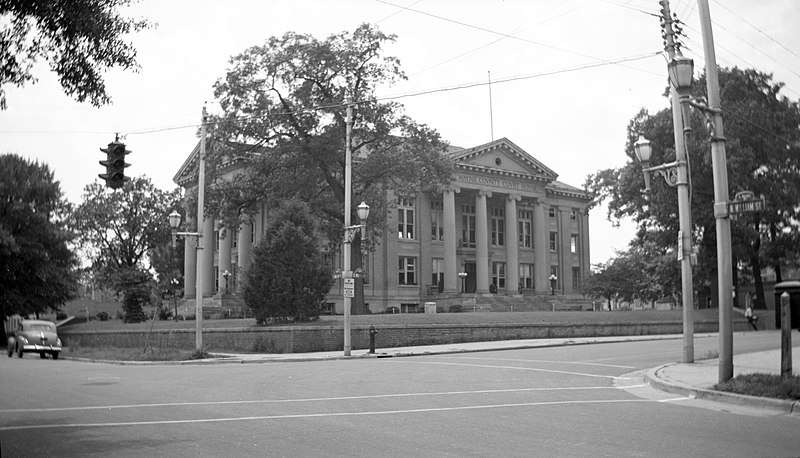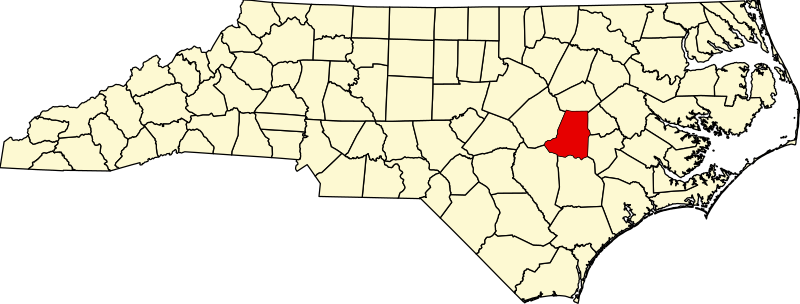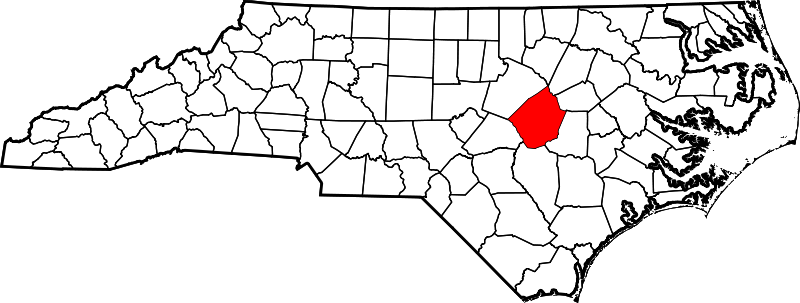- 1940, death of sisters Appie Howell Worley, and Tilithia Howell Lane.
- 1940 Census Goldsboro, Wayne, NC
- 1941, Death of siblings London King Howell, and Genetta Howell Hinnant
- 1941, US enters World War II
- 1942, Fristus joins the Army
- 1945, V-J Day
1940, age 67
Death of sister Appie Howell Worley, 27 March 1940, Pine Level, Johnston NC
Death of sister Tilithia Howell Lane, 24 December 1940, Howell Plantation, Johnston NC
Death of sister Tilithia Howell Lane, 24 December 1940, Howell Plantation, Johnston NC
1940 Census
 |
| Add caption |
Line 14, 733 North Herman Street, Goldsboro Twp, Wayne County NC. Frist Howell is renting the place for 12$ per month.
- Frist Howell, Head, white male age 65. Did not attend school, completed 1st grade, lived in same place in 1935. It seems Fristus is unable to work. His parents were born in NC, he spoke English, Veteran Father is not dead, he has a Social Security number, his usual occupation is Labourer at the County Laundry
- Katie, wife, white female age 44. did not attend school, completed 4th grade, was born in Sounth Carolina, lived in same place in 1935, as did everyone else in the family. Works as home housekeeper.
- Lois, daughter, age 20. did not attend school, completed 5th grade, born NC. Worked for private for pay, worked 48 hours during week of March 24-30 1940, as a labourer for the City Laundry.
- Thadus, son, age 17, did not attend school, completed 6th grade, born NC. Thatus was also not employed during that week in March for some reason.
- Roland, son, age 14, did attend school, completed 6th grade so far, born NC.
- Heywood, son, age 11, did attend school, completed 4th grade so far, born NC.
- Aline, daughter, age 9. did attend school, completed 1st grade so far, born NC.
- Eula, daughter, age 7, did attend school, has not completed any grade so far, born NC.
- Alford, son, age 2, no school. born NC.
1941, age 69
Death of sister Genetta Howell Hinnant, 5 June 1941, Goldsboro, Wayne NCDeath of brother London King Howell, 9 November 1941, Springhill, Wilson NC
US enters World War II
1942, age 70
Residence Goldsboro NCFristus Haywood Howell registered for the US military draft in 1942 during WWII
1944, age 72
 |
| Fristus Howell with Melvin Howell Brunswick Georgia photo courtesy of Bill Vidunas |
 |
| Back of photo written by Bill Vidunas |
 |
| Fristus Haywood Howell William Roland Howell |
 |
| 1944 Fristus Howell age 72 Brunswick Georgia |
 |
| Back of photo written by Bill Vidunas |
 |
| Fristus Howell 1944, Georgia |
 |
| Back of photo written by Bill Vidunas |
1945, age 73
V-J Day1948
 |
| Wayne County Courthouse, Goldsboro, NC, 23 July 1948, by Clarence Griffin. From General Negative Collection, State Archives of North Carolina https://en.wikipedia.org/wiki/File:Wayne_County_Courthouse_1948.jpg |
 |
| Fristus Howell 3 gen pedigree from Ancestry.com |
________________________________________________________-
Historical Insight -- Registering for Draft in World War II, from Ancestry.com
Even before the Japanese attack on Pearl Harbor, the United States established its first peacetime draft in 1940.
 |
| Credit: Planet News Archive/SSPL/SSPL via Getty Images from Ancestry. com |
Though the United States wouldn’t enter World War II until December of 1941, it issued its first peacetime draft in 1940, which required all men between 21 and 45 to register for military service. From farmlands, cities, and small towns alike, millions headed to basic training to become soldiers, sailors, and pilots. More than 70 percent of Americans supported the draft, believing the country would soon join Britain’s fight against Germany. And the United States did declare war on December 8, 1941, the day after the Japanese attack on Pearl Harbor. While the majority of American men were proud to do battle against the Axis Powers, some protested on religious grounds—72,000 registered as conscientious objectors. Others emphasized the hypocrisy of fighting for democracy abroad, when the military remained racially segregated. Despite protests, by the war’s end, 16 million Americans, including 1.2 million African Americans, had served their country.




































